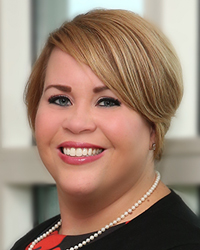Biosimilar Policies To Watch As We Approach 2019

By Anna Rose Welch, Editorial & Community Director, Advancing RNA

2018 has been a big year for biosimilar policies. If you’re like me, it’s been hard to keep tabs on all the ongoing conversations and potential changes. Thankfully, Biosimilar Development’s editorial board includes Molly Burich, director, public policy: biosimilars and reimbursement for Boehringer Ingelheim, who is the go-to expert on any and all things policy-related. I reached out to Burich to get her input on the policies she expects could have the largest positive or negative impact on biosimilars, as well as what progress has been made on the policy front.
Anna Rose Welch: Are you finding that U.S. policy makers are increasingly cognizant of biosimilars and their potential? What factors have played the biggest role in building and sustaining excitement for biosimilars on the policy level?
 Molly Burich: The awareness around biosimilars by policymakers has grown considerably over the last few years. This is in part due to educational efforts by manufacturers and other stakeholders, but also because FDA Commissioner Gottlieb continues to speak on both the opportunities and challenges of this growing market in the U.S. Also important, Secretary Azar and CMS Administrator Seema Verma have spoken of the role that biosimilars can play in reducing drug prices in the U.S., which helps reinforce the importance of having biosimilars in the healthcare system.
Molly Burich: The awareness around biosimilars by policymakers has grown considerably over the last few years. This is in part due to educational efforts by manufacturers and other stakeholders, but also because FDA Commissioner Gottlieb continues to speak on both the opportunities and challenges of this growing market in the U.S. Also important, Secretary Azar and CMS Administrator Seema Verma have spoken of the role that biosimilars can play in reducing drug prices in the U.S., which helps reinforce the importance of having biosimilars in the healthcare system.
Welch: What are some of the biggest reimbursement and access trends that you feel biosimilar stakeholders need to be keeping close tabs on?
Burich: Given the volume of activity coming out of The Department of Health and Human Services (HHS) and CMS, there are many topics that could serve as an interesting opportunity for biosimilars, or, at the very least, require those considering the launch of a biosimilar to evaluate the appropriate path forward. For example, the “rebate wall” dynamic has been discussed across many stakeholder meetings, and even FDA Commissioner Scott Gottlieb has outlined the reality of this market dynamic being a hurdle for biosimilar uptake. Therefore, the pending HHS rule around the potential removal of the safe harbor for rebates across federal programs is of specific interest to biosimilar manufacturers. (The safe harbor provision permits pharmaceutical companies to legally provide rebates to insurers or pharmacy benefit managers [PBMs], so long as the insurer or employer paying for the drugs is made aware of that rebate.)
If the rebate model does change across federal programs, this could represent a real opportunity for biosimilars to excel. At this point, however, we do not know enough about what the rule will entail to fully evaluate the impact.
Another area to keep an eye on is patent litigation. Litigation is a leading barrier to biosimilars, with some brand companies constructing unjustified “patent thickets” so they can file prolonged, expensive litigation against potential competitors. Humira is a prime example; more than 15 years after adalimumab was approved to treat rheumatoid arthritis, there is still no biosimilar of that drug available to those patients due to ongoing litigation.
Welch: The reimbursement and policy space has been on fire lately, what with the HHS’s request for information; the administration’s blueprint; and the new Medicare Part B step-therapy policy, to name a few. Which policy discussions are you the most intrigued by?
Burich: The discussions around the removal of the rebate safe harbor from federal programs is the most intriguing because it would be a potentially seismic shift in some markets (e.g. Part D) and could really provide a significant opportunity for biosimilars to compete. The Administration only has purview over federal programs and the safe harbor only applies to federal programs. While this includes all federal programs (eg, Medicare Part B, Medicaid, etc.), we see this primarily impacting Part D because there are no rebates in Part B and other programs like Medicaid have statutorily mandated rebates, so any change in the safe harbors would not impact those items in statute.
Welch: Are there any policies in the works that you have concerns about?
Burich: There are many policies that could negatively impact patient access. Fundamentally, we want to ensure that a robust biosimilar market is developed, but this has to be developed with buy-in from physicians and patients. Therefore, any policy that could impact patient access is concerning. For example, included in the Trump FY2018 budget was a proposal to remove the manufacturer “donut hole” discount from the Part D true out-of-pocket (TrOOP) calculation. This would have catastrophically negative effects for Part D beneficiaries. Policy changes that could negatively impact patient out-of-pocket costs are always a concern.
Welch: What are some of the best ways the industry — namely other policy-related professionals in biosimilar companies — can play a part in keeping this momentum going?
Burich: Biosimilar companies need to continue to draw attention to the existing market dynamics and educate about the uptake challenges. This is equally as important as identifying new biosimilars policy opportunities or ideas. The U.S. healthcare system and supply chain are complex and require continued education and engagement by concerned stakeholders to ensure any sweeping change takes into account the right dynamics.
